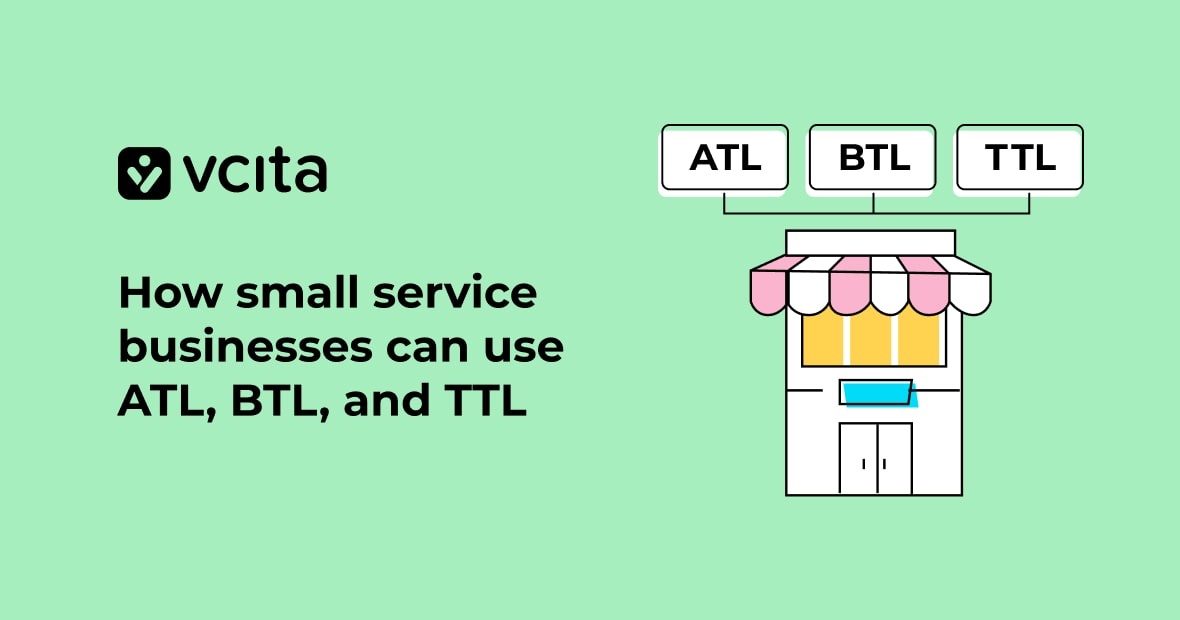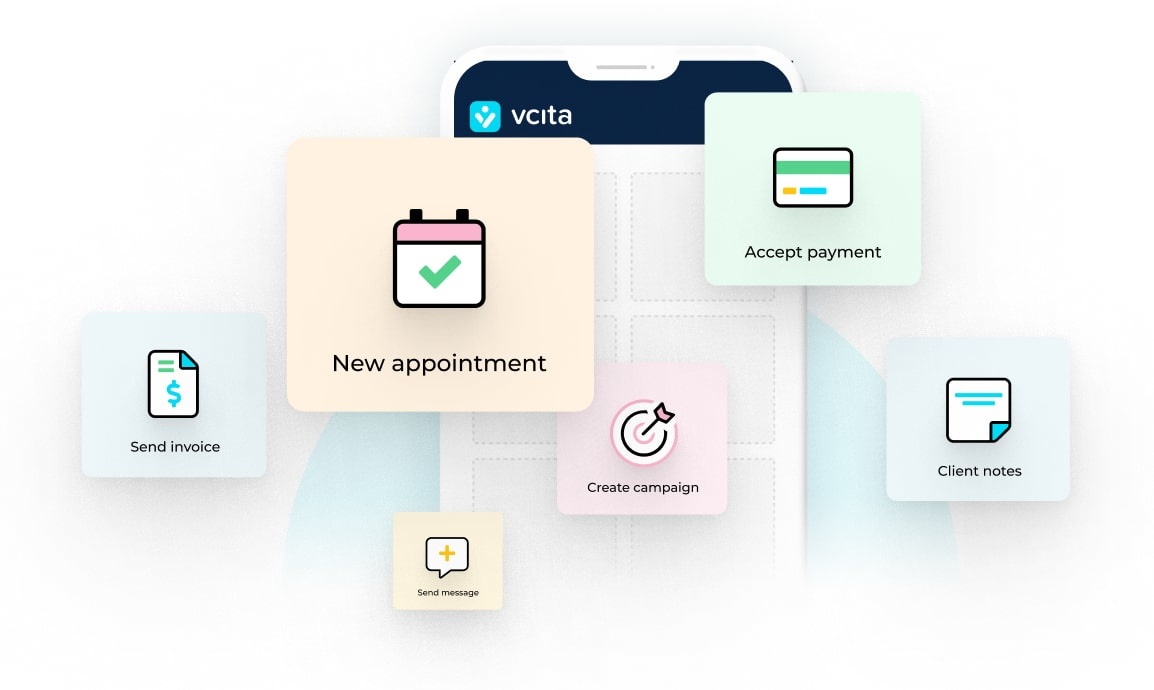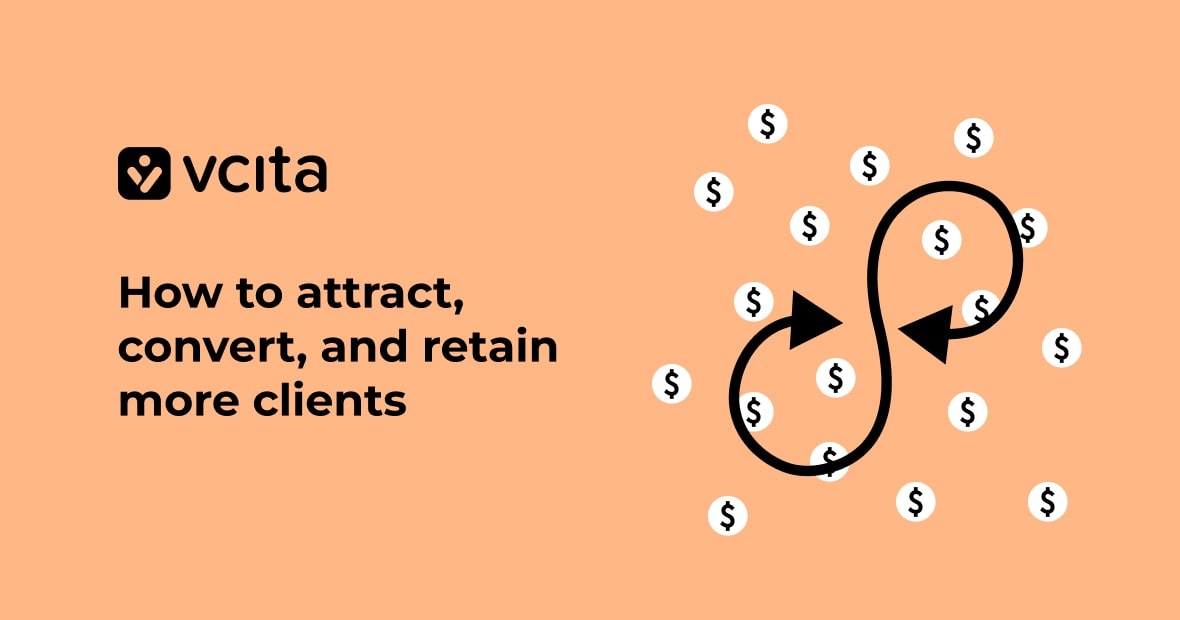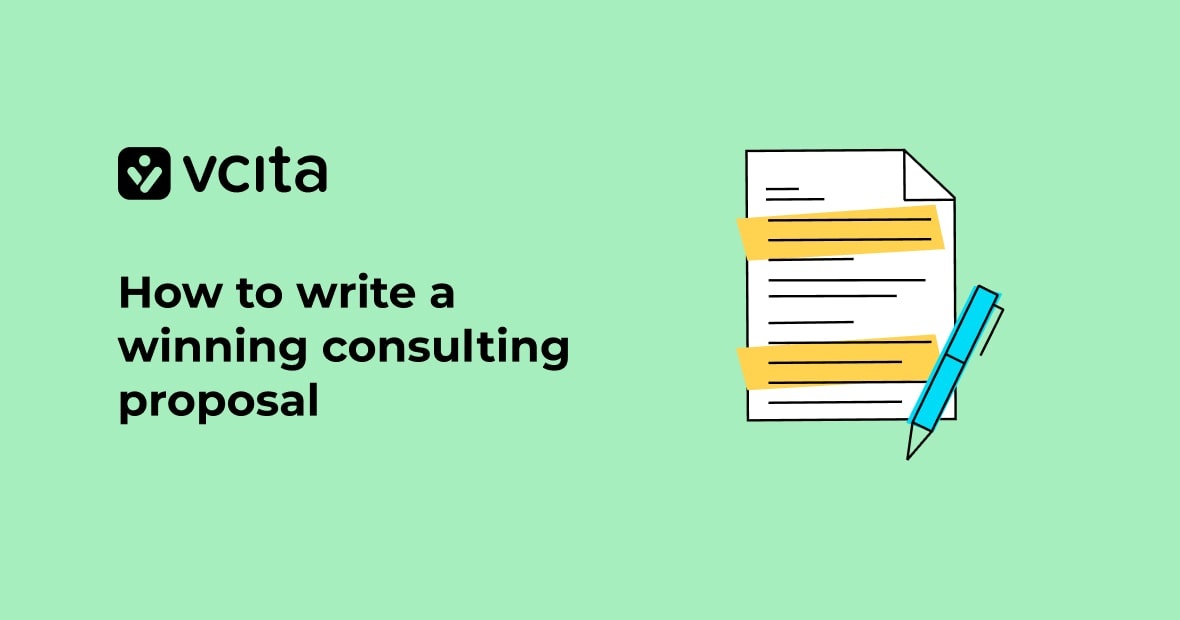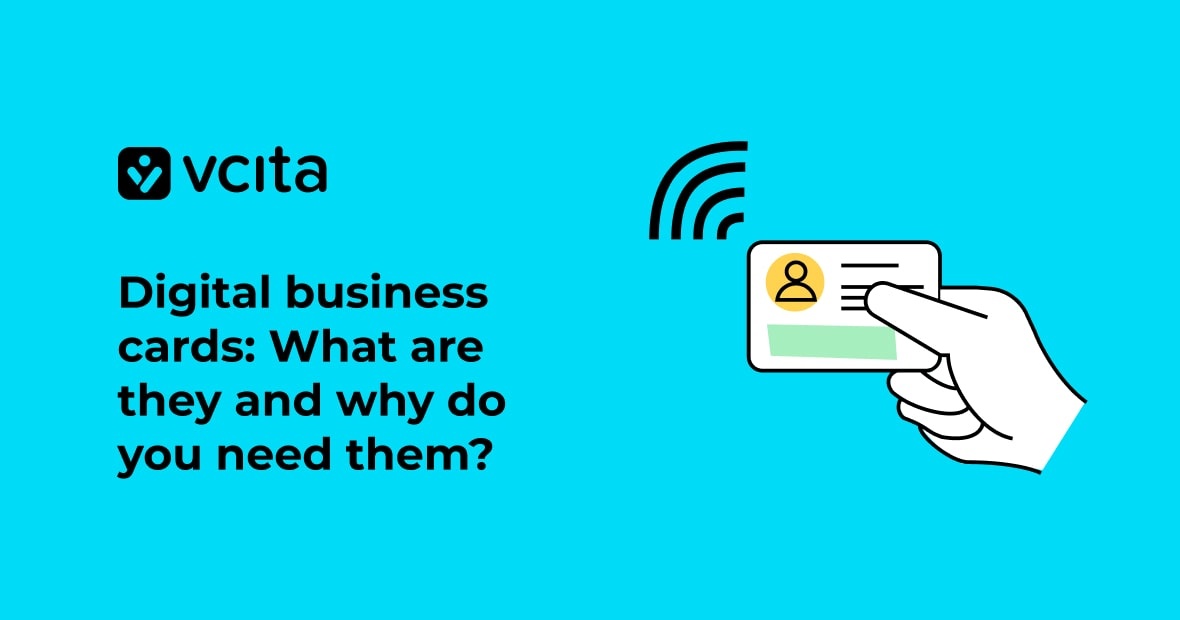Small service businesses don’t need big-brand marketing budgets to succeed. They just need clear plans, steady follow-ups, and offers that people understand. Getting that message across requires steady marketing work that balances metrics like ATL, BTL, and TTL.
This guide explains ATL, BTL, and TTL marketing in plain words so you can put them all to good use. You’ll see what each one is, when to use it, and how to run a 90-day plan without wasting money. I’ll use local examples and show where a platform like vcita, which handles booking, payments, and client follow-up, comes in to turn your marketing into real appointments and repeat work.
Key takeaways
- ATL vs BTL vs TTL: ATL = broad reach (radio, billboards). BTL = targeted, direct (email, SMS, referrals). TTL = one story across both with a clear tracking bridge.
- For small budgets, start with BTL. Build a contact list, send helpful messages, and follow up fast. Add ATL later to scale.
- Offers win. Clear, simple offers beat clever slogans. Try wording like “$49 first clean,” “Free 15-min consult,” or “10% off color on weekdays.”
- Track everything. Use one landing page, one phone number, one QR, and UTM links for each campaign. Save the source of each client in vcita so you can see what worked.
- Answer missed calls. Missed calls kill ROI. Use call routing and texting to call back fast. Tools like vcita’s Calls & Text help.
- Consistency beats intensity. One message, one offer, and one landing page, for 6–12 weeks.
- Use your schedule as your CTA. “Book now” with real-time slots works better than forms. vcita’s online scheduler helps you convert right away.
- Referrals are BTL gold. Ask every happy client for one referral. Make it easy with a link or QR.
What ATL, BTL, TTL actually mean (in real life)
ATL stands for above-the-line. This means broad reach marketing, like ads on local radio, billboards on your commute, bus ads, streaming audio for your city, or a sponsorship mention during the weather. You aim for awareness, not targeting.
BTL stands for below-the-line. This is direct and targeted marketing. Think emails, SMS marketing, WhatsApp, direct mail, Google Local Services Ads, door hangers, flyers at a nearby gym, referral programs, and local events where you collect contacts and book on the spot. Your aim is an instant response, not just awareness.
TTL stands for through-the-line. This ties ATL and BTL together with one clear message across every marketing channel, using one tracking path like a QR code, short URL, call number, or “Book now” link. ATL spreads the word, and BTL captures the lead and closes the booking. TTL is the system that tracks both stages.
If you have a service business like a salon, a plumber, a fitness studio, a therapist, or a coach, you can use all three elements, but you don’t have to start all three at the same time.
Rule of thumb:
- Start with BTL to get cash flowing.
- Add a bit of ATL when your offer is converting.
- Switch to TTL when you have steady operations and want to grow.
ATL for small service businesses (how to keep it lean)
Good ATL options that don’t need huge money include:
- Local radio, using cheap dayparts, short runs
- Streaming audio, using geofencing and city-level targeting
- Community sponsorships such as youth sports, school newsletters, and neighborhood events
- Out-of-home ads close to your service area such as billboards and transit advertising in just one or two placements, not the whole city
- Local print inserts if the audience matches your client base.
Pros: reach, trust, social proof.
Cons: harder to track impact and ROI
How to track ATL on a budget:
- Pick one ATL channel for one neighborhood/zone.
- Build one message with one offer (weekday color discount, free first consult, “$0 service call with repair”).
- Point to one landing page with clear “Book now” buttons and real slots. Tools like vcita make the booking part easy and instant.
- Use one phone number or QR per campaign so you can see results.
- Run for 6–8 weeks. Don’t change your message every week.
- Review bookings and show rate, not just clicks.
Example ATL line (radio 10 seconds):
“Need your home ready for the weekend? CityClean has a $49 first clean this month. Scan the QR or visit cityclean.com/radio. Book your time now.”
BTL for small service businesses (where money returns fastest)
BTL is where you can win clients fast. BTL channels that work include:
- Google Business Profile: use it to collect reviews, enable booking links, and list services.
- Email and SMS marketing: send reminders and seasonal offers like “we have openings today” or “missed you yesterday.”
- Direct mail: geofence the area tightly and send postcards with one QR and one offer.
- Local partnerships: cross-promote with a yoga studio, salon, or dentist.
- Referral program: offer clients bonuses like “give $20, get $20.”
- Lead forms: run them on Facebook or Instagram, but keep the form short.
- Door hangers or flyers: include a scannable QR that goes to your booking page.
Must-haves for BTL:
- A clean list with names, email, phone number, and the service each client wants.
- Consent for messaging.
- A CRM to store all the information. vcita can auto-create contacts, tag the source, and keep notes tied to bookings and payments.
- Templates for messages. Keep them simple but personal.
- A follow-up workflow: a quick first reply, then a reminder, then a second offer if needed.
BTL message examples (you can copy these):
SMS to past clients (salon):
“Hi Maya, it’s Rina from Shine Studio. Weekday color is 10% off this month. Want me to hold a spot? Book here: shine-studio.com/weekday”
Email to prospects (plumber):
“Hi, I’m Eli from ClearPipe. We’re doing free camera inspections with any drain clear this week. It takes 30 minutes. You can pick a time here: clearpipe.com/book”
WhatsApp follow-up (fitness studio):
“Hey Tom, it’s Jess at Loop Fitness. Two spots left in tonight’s HIIT. Want one? Grab it here: loopfit.com/tonight”
How vcita helps BTL:
- Online scheduler shows real times, not “we’ll get back to you.”
- Automated reminders reduce no-shows.
- Client cards store every message and appointment in one place.
- Payments and estimates are built in, so the “yes” turns into revenue.
- With Calls & Text, you can text back missed calls and acquire a client automatically.
TTL: the simple system that ties it all together
TTL is a fancy term for running one story across all your channels, with one way to track results.
Your TTL frame:
- One message: the offer (e.g. free consult, weekday color, $0 service call).
- One home: a landing page with your offer and a booking calendar (vcita can be the booking engine).
- One bridge: a QR code or short URL that you use everywhere.
- One follow-up: an email or SMS workflow that books or re-books.
Example TTL campaign (6 weeks for a salon):
- ATL: 2 billboard faces near the commuter route, weekdays 7–10am.
- BTL: SMS to past clients about weekday color, plus an email to the list, plus a referral request.
- Home: shine-studio.com/weekday with an embedded vcita schedule and a short form for questions.
- Bridge: the same QR and short URL on the billboard, in SMS, and in email.
- Follow-up: If someone visits but doesn’t book, send a gentle nudge the next day at 10am.
Why this works: you’re not splitting attention. People see the same idea everywhere, land on the same page, and book in the same place, so you can measure the impact.
Budget splits you can copy
Budget under $1,000/month (new or lean business)
- BTL (90%)
- Google Local Services/Performance Max: $400
- SMS/email tool + list growth: $120
- Direct mail or door hangers to 1–2 routes: $200
- Referral rewards: $100–150
- Landing page + booking (vcita): part of your ops budget
- ATL (10%)
- One micro-sponsorship or streaming audio test: $80–100.
Goal: find one offer that converts, collect contacts, and book repeat visits.
Budget $1,000–$5,000/month (steady bookings, want growth)
- BTL (70%)
- Google Local Services / retargeting: $1,200–$2,000
- SMS and email with automations: $150–$300
- Direct mail in tight zones: $300–$600
- Referral rewards/events: $200–$400
- ATL (30%)
- Local radio/streaming flight: $600–$1,200
- One OOH placement or community sponsorship: $300–$800
Goal: switch to TTL with the same offer across everything, one landing page, and one number.
Budget $5,000–$20,000/month (multi-location or rapid growth)
- BTL (60%)
- Always-on search + retargeting: $2,000–$6,000
- CRM-based win-back/lifecycle flows: $300–$700
- Quarterly direct mail to key ZIPs: $800–$2,000
- ATL (40%)
- Mix of radio, OOH, and streaming audio with frequency: $2,000–$8,000
Goal: keep TTL and add a second offer to test (e.g., “weekday” vs “first-timer”).
A 90-day plan you can follow
Days 1-7: Pick your offer and build your home
- Choose one service to push.
- Write the offer in one sentence e.g. “$0 service call with any repair in August.”
- Create a landing page with that offer and put “Book now” above the fold.
- Add a vcita booking widget so people can choose a time.
- Set up one new phone number or call tracking line for this offer.
- Create a short link and a QR code.
Days 8-21: Set your BTL
- Clean your list. Tag clients by service and recency.
- Write one email and one SMS. Keep it short.
- Build your follow-ups: 1-day nudge, 7-day reminder, 30-day win-back.
- Add a referral request to your finished-appointment messages.
- Prepare door hangers or a small direct mail drop with the same QR code.
Days 22-45: Add a small ATL push
- Buy a small radio or streaming flight, or one OOH placement.
- Make sure the QR and short link are the same as in BTL.
- Train your staff to ask, “How did you hear about us?” and select the campaign tag in vcita.
Days 46-60: Watch the numbers
- Track: new leads, bookings, show rate, revenue, cost per booking, and missed calls.
- Fix missed calls using vcita’s Calls & Text to text back fast and complete bookings.
- Look for bottlenecks. For example, if landing page clicks are high but bookings are low, simplify the page. If bookings are high but no-shows are up, tighten reminders.
Days 61–90: Adjust and scale
- Keep the top offer. Drop weak channels.
- Add a second zone or a second ATL unit if ROI is good.
- Test a second BTL message to past clients.
Measuring marketing ROI: simple, not fancy
Core numbers to track:
- Leads = number of people who call, message, or start booking.
- Bookings = appointments on the calendar.
- Show rate = shows ÷ bookings.
- Revenue per booking = revenue ÷ bookings.
- CAC (cost per acquired client) = spend ÷ new clients.
- LTV (lifetime value) = average revenue from a client over a set window (6–12 months).
Formulas you can use:
- Booking conversion = bookings ÷ landing page visitors.
- Cost per booking = campaign spend ÷ bookings.
- Return on ad spend (ROAS) = revenue ÷ spend.
How vcita helps with measurement:
- Tag campaign source on the client or appointment.
- Store coupon codes on the booking, invoice, or estimate.
- See client history, first visit, last visit, total spend.
- Export data if you need a simple spreadsheet.
Tip: never run ATL without a tracking bridge. Use one number or one URL. If you can’t track it, you can’t fix it.
Offers and creative that actually convert
What works:
- A clear deal, tied to a time window.
- A reason (weekday, first-timer, seasonal).
- One action: book now.
Offer ideas by service:
- Salon: 10% off weekday color, $15 off first-time cut/color, “bring a friend” discount.
- Plumber: $0 service call with repair, free camera inspection with drain clear.
- Fitness: 7-day trial for locals, first class free weekdays only.
- Therapy/Coaching: free 15-minute consult, limited sliding-scale slots this month.
- Home cleaning: $49 first clean (starter), 10% off recurring weekly.
Sample lines:
- “Book your first clean for $49. This month only.”
- “Weekday color is 10% off. Choose your time.”
- “Free 15-minute consult. Pick a slot that works.”
Landing page checklist:
- Offer headline in plain words.
- Booking widget embedded (vcita).
- Three bullets: what you do, how long it takes, what it costs.
- Short trust proof: a few reviews, a photo of your team.
- One FAQ block: cancellation, parking, payment.
Local partnerships and events (BTL booster, TTL friendly)
- Team up with one nearby business that shares your audience.
- Make a joint offer (yoga + massage, teeth whitening + facial).
- Put the same QR on both counters.
- Host a small event. Collect sign-ups on a vcita form. Let people book a slot on the spot.
- Follow up next day with a thank you and the booking link.
This is cheap and real. And it builds word-of-mouth.
Common mistakes (and simple fixes)
Too many messages.
Fix: one offer, one page, one number.
No follow-up.
Fix: automated reminders and win-backs in vcita.
Missed calls.
Fix: route calls, send a text if you can’t pick up, and call back within 10 minutes using vcita’s Calls & Text.
Cluttered landing page.
Fix: fewer words. One button. Real calendar slots.
Changing the offer every week.
Fix: run 6–8 weeks, then review.
No consent for messaging.
Fix: get a clear opt-in and keep your list clean.
Three TTL plans you can copy and paste
1) Hair salon, Weekday Color Push (6 weeks)
- Message: “10% off color, Monday–Thursday.”
- Home: shine-studio.com/weekday with vcita schedule.
- ATL: two small radio spots during morning drive.
- BTL: SMS to clients who got a color in the last 6 months; email to the full list; Instagram lead form.
- Bridge: same short link/QR everywhere.
- Follow-up: 24-hour nudge to non-bookers; no-show prevention reminder 24h before.
2) Plumbing, $0 Service Call with Repair (8 weeks)
- Message: “$0 service call when we do the repair.”
- Home: clearpipe.com/repair-deal with booking or “call now” plus tracked number.
- ATL: one local billboard near a home improvement store.
- BTL: Google Local Services Ads, plus a postcard to three ZIP codes.
- Bridge: billboard QR and tracked phone number match the page.
- Follow-up: missed-call text + quick booking link (Calls & Text).
3) Coaching, Free 15-Minute Consult (6 weeks)
- Message: “Free 15-minute consult. Pick your time.”
- Home: coachjane.com/consult with vcita times and a short intake.
- ATL: sponsor community newsletter.
- BTL: email to LinkedIn contacts, referral ask to past clients, one webinar night.
- Bridge: same link in newsletter and emails.
- Follow-up: automatic reminder, then a recap email with next steps.
Tools you need (that keep your stack short)
- Booking + CRM + payments: vcita. You get online scheduling, reminders, client records, and payment links in one place.
- Call handling: a single business number, call routing, and text back missed calls. vcita’s Calls & Text covers this.
- Email/SMS: use simple templates and automations. vcita can handle standard flows tied to appointments.
- Tracking: one short link, one QR, UTM tags, and a call tracking line if you rely on phone calls.
- Reviews: ask after the appointment and automate the request.
- Design: keep it simple. A photo of your real team beats stock photos.
You don’t need a big stack. You need a clean flow.
Closing thoughts on ATL, BTL, and TTL for small service businesses
Marketing for small service businesses doesn’t need jargon or big budgets. It just needs clarity, and that means one offer, one path to book, and one way to track it all. Start with BTL to get results, add ATL when your message is working, and tie them together with TTL so every touch leads to a booking. A platform like vcita helps you turn interest into appointments, payments, and repeat visits without bouncing people between apps.
FAQs
Is ATL worth it for a small business?
Yes, if you keep it tight and trackable. One billboard near your service area or a short streaming audio flight can work. Tie it to one offer and one page.
Should I start with BTL?
Yes. It’s the fastest path to booked work. Build your list, message with a clear offer, and follow up.
What is TTL in plain words?
It’s the same message across ATL and BTL with one path to track results. Think: billboard → QR → booking page → SMS reminder.
What’s the cheapest ATL?
Streaming audio with a small geofence or a community newsletter sponsorship. Both can cost just a few hundred dollars.
How do I measure radio or billboards?
Use a QR and a short URL unique to that campaign. Also use a unique phone number. Ask “how did you hear about us?” and record it in your CRM (vcita).
How many channels should I run at once?
Two to three is enough: one BTL lead driver (search or SMS/email), one ATL touch (radio or OOH), plus your landing page.
What if my calendar is full?
Raise prices slightly or promote off-peak times (weekday daytime) to smooth demand.
Do I need a fancy website?
No. You need one clean landing page with a booking widget (vcita) and a few trust signals.
Is SMS okay?
Yes, with consent. Keep messages short and useful and offer to stop anytime.
























